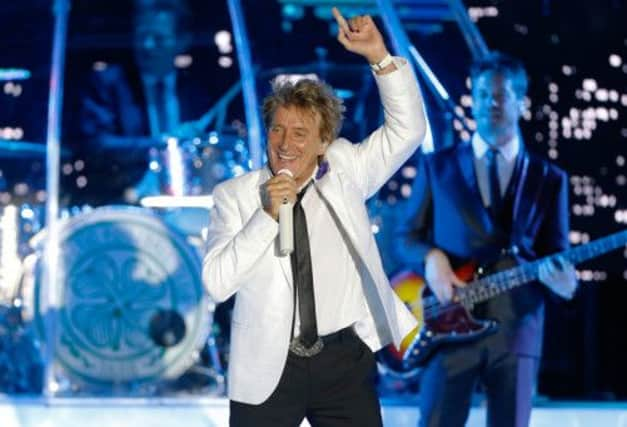Brian Ferguson: Scottish art projects aplenty


And, if all goes according to plan, this momentous occasion will be marked by Rod Stewart striding on stage in Glasgow tonight to a roar to match any he has heard at Hampden Park over the years.
After two high-profile film premieres in the space of a week in Edinburgh, Jack Vettriano launching his first major retrospective in Glasgow and the premiere of Ian Rankin’s debut stage play in the capital on Saturday night, there has been plenty to dispel the post-festival blues this month.
Advertisement
Hide AdAdvertisement
Hide AdAnd today, city leaders in Dundee will put the seal on its bid to become UK capital of culture in 2017, which appears to stand as good a chance as rivals Hull, Leicester or Swansea Bay.
It is all a far cry from events which unfolded exactly 51 weeks ago today after that infamous open letter signed by 100 leading artists arrived at the headquarters of arts agency Creative Scotland.
If there are growing rumblings of discontent about the handling of its film sector review, and the lack of progress on plans for a major studio complex, last year’s “stooshie” – which resulted in the resignation of chief executive Andrew Dixon – now seems very distant.
The official opening of the Hydro tonight will have Glasgow basking in the limelight. Having visited and had my breath taken away by the vantage point on offer from what are normally the worst seats in any venue, it should be an occasion to remember for the 13,000 lucky ticket-holders.
It may be early days, but the venue may just secure a place in the affections of the city’s music lovers like no other since the rebirth of the Barrowland Ballroom in the mid-1980s.
The Hydro certainly felt a far cry from Murrayfield Stadium, the venue for the last major concert I attended, when Madonna’s performance, and the muted atmosphere for most of the night, left me cold.
And it is certainly nothing like the “black box” environment at the SECC, which is likely to host mainly conferences and exhibitions for the rest of its life, as it was originally built for.
Although the fully-lit Hydro is an incredible sight, it is only when you step inside the building that you realise what an achievement its completion is.
Advertisement
Hide AdAdvertisement
Hide AdYou would have to back to the creation of the Royal Concert Hall for the city’s reign as European capital of culture in 1990 to find the last time there was such a significant addition to the city’s cultural landscape. Crucially, the Hydro’s capacity is around five times bigger.
But there is another major project on the horizon elsewhere in the country which could give the Hydro a run for its money in the iconic image stakes.
Regardless of whether its UK city of culture bid is successful, the V&A museum in Dundee is the next big cultural project due to come to fruition in Scotland over the next few years.
Unless the project is a total disaster, the transformation of the waterfront area should help redefine the city completely.
That is exactly what Glasgow is hoping for with the Hydro, despite already having Unesco “city of music” status.
But not for the first time in this column the question has to be asked: what on earth is happening in Edinburgh?
The capital rightly basked in the glory of its festivals this summer – it was a bumper year – but with so many failed, abandoned or simply forgotten-about cultural projects on its CV, I can’t be the only one wondering what lies ahead for the city.
A concert arena in Princes Street Gardens, a new film festival complex on Lothian Road, the conversion of a vast warehouse on Leith Docks into a gallery, a multi-purpose stadium in Sighthill and the transformation of the old Royal High School into a national photography centre are examples of publicised schemes that have come to nothing.
Advertisement
Hide AdAdvertisement
Hide AdEdinburgh’s waterfront, in particular, has been nothing short of a disaster over the last decade and after being cut adrift for the time being by the long-delayed tram project, the chances of any cultural buildings emerging out of the rubble look remote.
Can this really be the same area – home to the Scottish Government and VisitScotland – where MTV pitched up for its European music awards a decade ago next month?